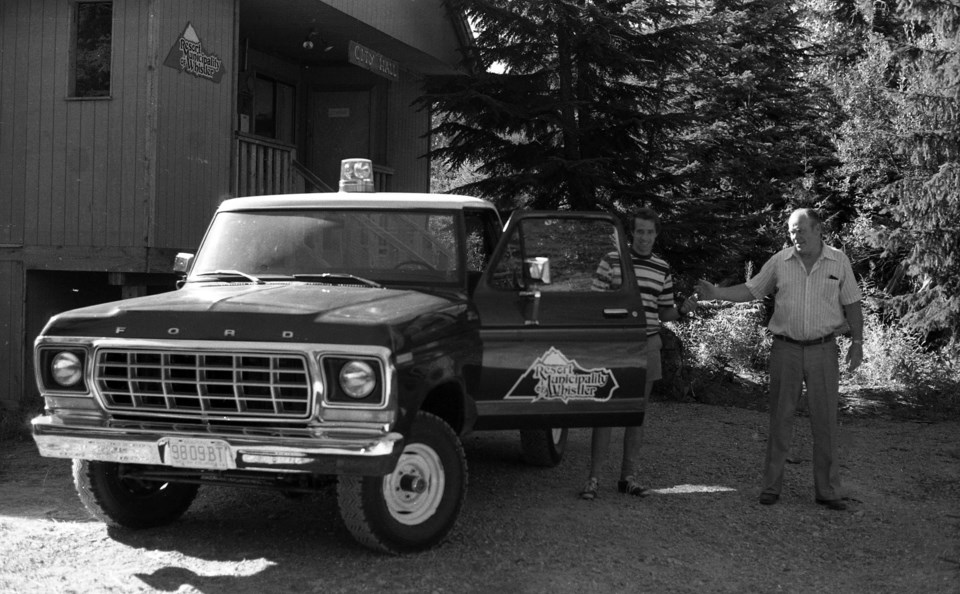As we have recently learned at the Whistler Museum, maintenance problems can pop up at the most inconvenient times and create quite the disruption. The same was true when a truck came down on power lines in Whistler one New Year’s Eve.
Disposing of human waste was an ongoing challenge for residents of Alta Lake and Whistler until the wastewater treatment plant opened in 1977. Prior to the sewer system, residents had private septic systems or outhouses, which posed environmental and practical problems for the growing community. On the weekends, Brian Leighton, who lived in Creekside, regularly had to knock on the door of the upstairs units asking if they would hold off from flushing the toilets, as the septic system would back up through his toilet when all the units were full.
According to Garibaldi’s Whistler News, in 1977, Whistler had a permanent population of 800, but this swelled to nearly 7,000 during the peak season and a reliable sewer system was required before the town could grow further. The importance of the sewer was not understated by Mayor Pat Carleton during the grand opening of the wastewater treatment plant, which included lunch, tours and much fanfare, when he said, “the foundation of Whistler’s future is this plant and sewer system.”
Despite initially being built to accommodate a growing community, the wastewater treatment plant could not keep up with the rapid and relentless increase in the population. Cliff Jennings was originally in charge of water distribution and sewer collection for the Resort Municipality of Whistler (RMOW) before becoming the superintendent of the wastewater plant. According to Jennings, every two years the wastewater treatment plant was having an expansion. However, with the economy slowing in 1981, there was no money to improve the plant coming from the provincial or federal governments despite the population increasing. “We were pretty much always three years behind until just very, very recently. It was always just [cross your fingers],” Jennings said.
Continual construction of the plant during this time had its own challenges. Timing had to be perfect, because it could only be powered down for short periods—about 90 minutes—before the waste had to be diverted, which meant raw sewage would be pumped directly into the river. “We never had to purposely divert, but we got awfully close,” Jennings said.
On the fateful New Year’s Eve, the power company had been working on the lines at the intersection of Highway 99 and Nesters when the hydraulic lift broke, landing the lift on the power lines. To get the lift off and the lines restored, the power would have to be turned off to the entire Whistler Valley while it was fixed. This included Whistler Village, which relied on floodlights as the main security measure on New Year’s Eve. Bringing down the lights would have meant total chaos in the busy village, and would be questionable for safety. However, without turning the entire power grid off, the line could not be fixed, and power to Whistler Cay and Nesters would be off all night until BC Hydro could fix the truck on the line. That would mean that the wastewater plant for these areas would also have no power for far longer than the 90 minutes, and without power, diversion of wastewater into the environment.
Due to safety concerns in the village, the decision was made to keep the power off to Whistler Cay and Nesters for the night, rather than turn all the power off to the entire valley to fix the line. Thankfully, Jennings and the wastewater team were instead able to keep the treatment plant going with a diesel generator. The lucky team got to ring in the new year with the sewage in the dark, but kept it going long enough that the lines could be fixed without any diversion, while revellers could continue as normal in the village.





